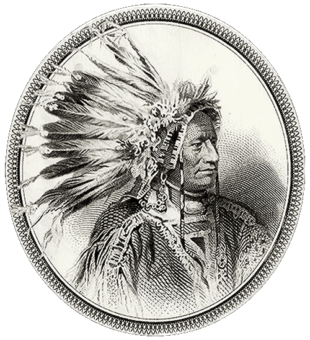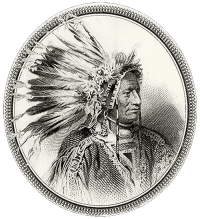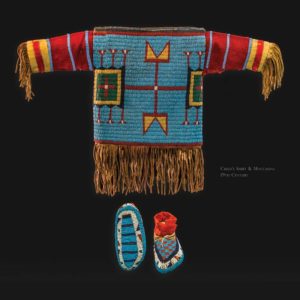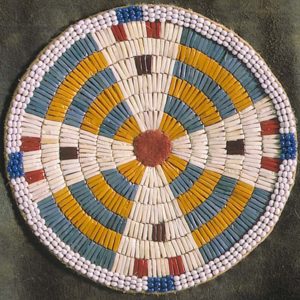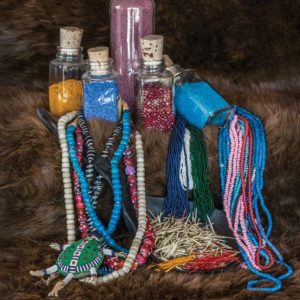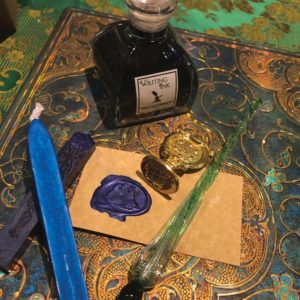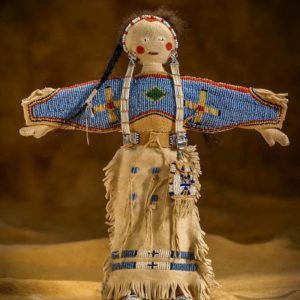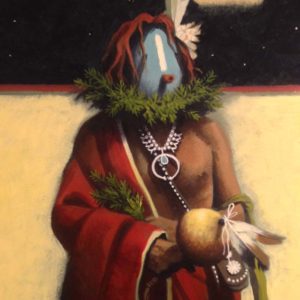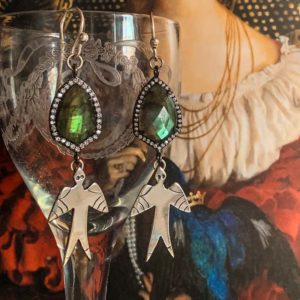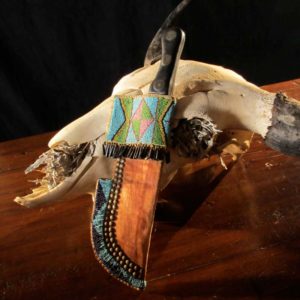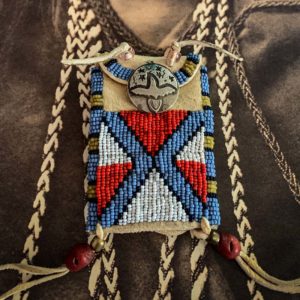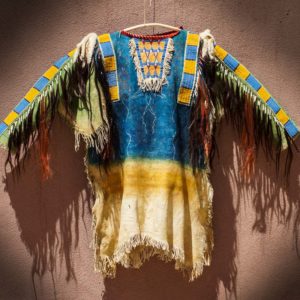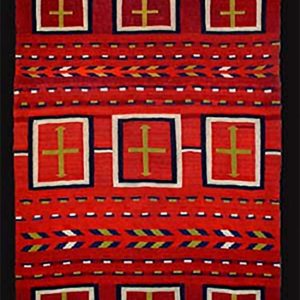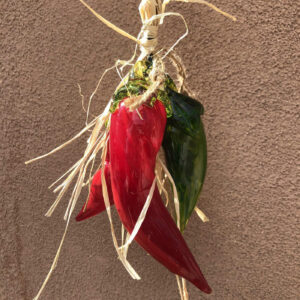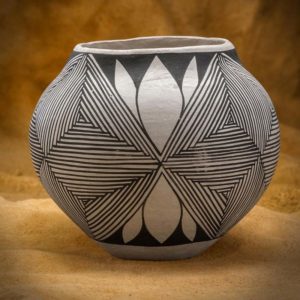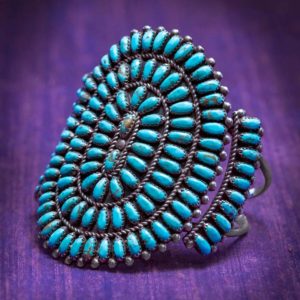Native American Costumes on the Screen
- Cathy A. Smith
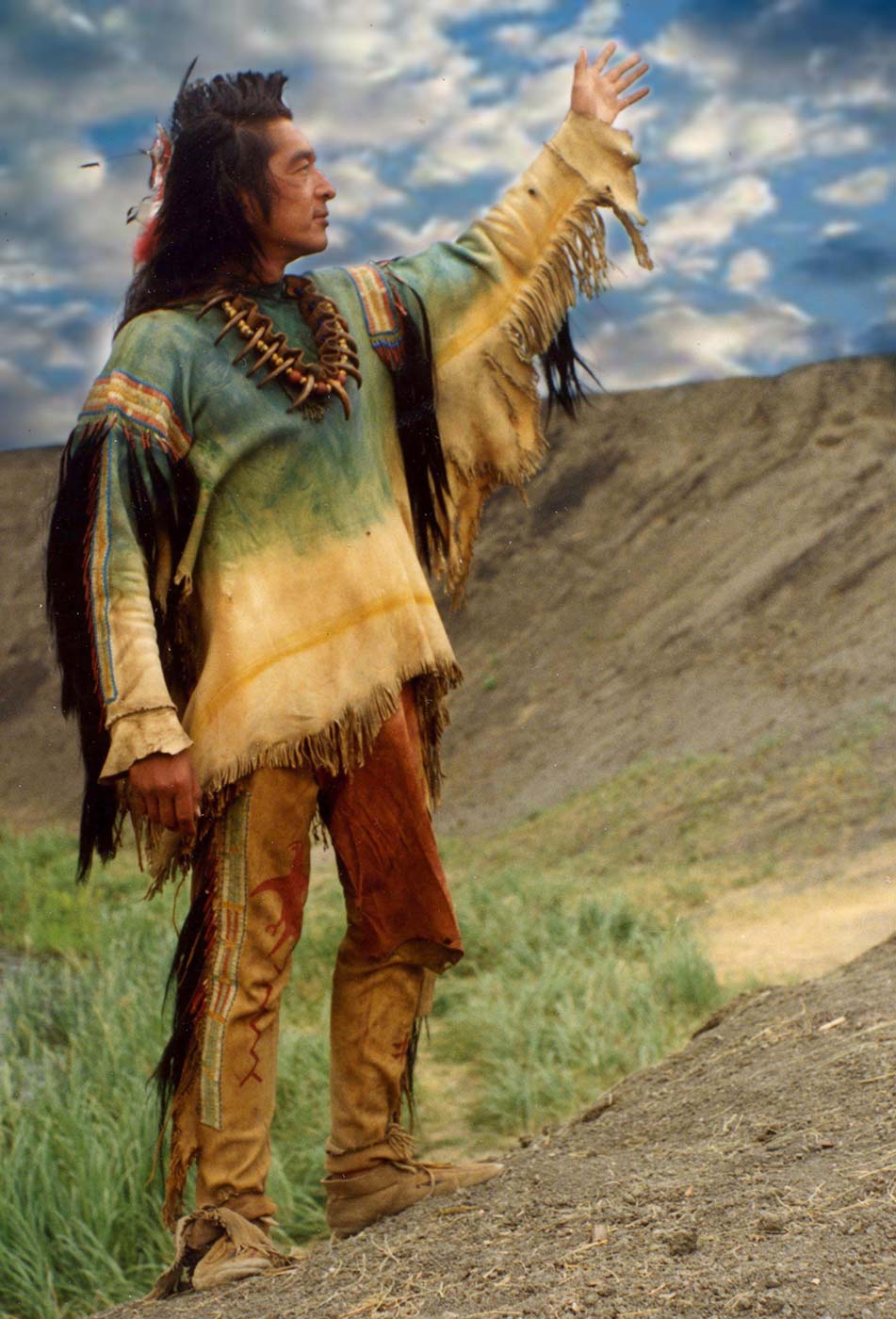
ABSTRACT
The challenge of designing Historic/ Period Native American costumes is complicated by the fact that five hundred Nations exist, each unique in clothing style, technique and materials. In the twenty- first century it is important to remember that these Nations are not a thing of the past. Preserving their cultural heritage is important, given the costs they have suffered through colonization. Accurate representation of a culture through research and skillful creation is one of the responsibilities of the costume designer.
INTRODUCTION
Historic Native American costumes present a challenge to the costume designer above and beyond the usual requirements. An implied responsibility to authentic representation exists, as often the public’s only exposure to a culture is from what they see in movies. The Westerns of the 1950’s and 60’s created a myth of the West in which most Indians were dressed as Sioux warriors in tipis and depicted either as savages or noble savages. This image changed with the films Little Big Man, 1970 and Dances with Wolves, 1990, becoming more realistic and humanizing.
There are five hundred Native American Nations, each distinct in language and dress, cultures that exist today, in spite of an implicit attitude that they are something of the past. Film extras are hired from these Peoples and expect to be dressed in a culturally appropriate manner. The twenty- first century audience is more knowledgeable as well, appreciating authenticity.
There is no single resource for historical research available, necessitating a multifaceted approach: the use of museums, historical paintings and photographs, tribal cultural liaisons, indigenous craftspeople, and the judicious viewing of previous films in a similar genre.
There is as well, no large rental stock of historically accurate Native American costumes available in Hollywood, although there are a few small, targeted rental and custom –made houses in New Mexico and other film supportive states.
The costume designer should assume that the majority of Native American costumes for their production must be made in house.
SECTION 2: COSTUME DESIGN
Costume designers are by nature, creative and innovative, qualities that can become a challenge when dressing another culture. How much creative license is okay within the confines of a tradition? Unless one is a historian of the specific culture, staying within traditional bounds is usually recommended. As the saying goes: “Truth is often stranger than fiction.” Deep research can reveal some astonishing effects.
Native American regalia is highly regional or tribal. It is indicative of position in society, artistic skill, and always spiritually inspired. It is highly detailed, vibrant in color, symmetrically constructed, and finely sewn. . A number of period films deviated from these facts, among them- A Man Called Horse, 1970, The Revenant, 2015, and The Lone Ranger, 2013.
Pre- white contact clothing made ingenious use of local materials: brain tanned buckskin, naturally dyed porcupine quills, shell, earth pigments and feathers. Films which take place in this time period (roughly 1600-1800) are more difficult to research – there is little written and few extant museum examples. The museums that have early artifacts are mainly in Europe: Deutsches Ledermuseum, Frankfurt, Linden Museum, Stuttgart, The British Museum, London, Naprstek Museum, Prague for example.
Paintings are a valuable source of information, notably the paintings of Karl Bodmer, depicting Prairie and Plains Indians, 1832-33. The paintings of George Catlin, same time period, are not as reliable. The 2017 film, The Journey of Prince of Wied, depicts Prince Maximilian zu wied and the artist, Karl Bodmer on their 1832 journey in North America. Costume designer, Cathy A. Smith, created the native costumes authentically from Bodmer’s paintings over a period of one year. This generous pre-production time is generally not available to most designers, making it very difficult to create authentically detailed regalia.
Dances with Wolves used Bodmer as a resource to good effect as well. This 1990 film effectively set the standard for the genre through- out the 1990’s. Other than Little Big Man, it was the first major motion picture to portray Plains Indians accurately through costume, sets, language and casting. The Indian actors were all Native (as opposed to disguised Caucasians) and the extras were local Lakota people, speaking their native language. The location in South Dakota was their traditional homeland. The tipis and props were historically accurate and the costumes, made by skilled historians for designer Elsa Zamparelli, were made from authentic materials: brain tanned buckskin, porcupine quillwork, earth paint and original stock Venetian glass beads. The film was nominated for 12 Oscars and won seven, including best picture. Authenticity in costuming made a difference.
A valuable resource for Eastern Woodland Indians and the early frontier are the paintings of Robert Griffing. The Mohawk and Cherokee costumes in Outlander, season 4, by designer Terry Dresbach are wonderful examples of good research and highly skilled craftsmen. In an interview with Town & Country magazine, Ms. Dresbach stated: “It was daunting. And I knew that we had an obligation to do it right,” “Hollywood has had a bad history with this, and I wanted to right that. I wanted to do it properly, and I staked that claim from day one with everybody I worked with. I said, ‘We’re going to do this right, we’re going to do this as accurately as possible.”
Indian Wars period (1840-1890) regalia is much easier to research. Numerous American museums with massive collections exist, many of which are now on-line: Museum of the American Indian at the Smithsonian, Chicago Field Museum, Buffalo Bill Center of the West in Cody, WY, etc.
Photographs and written accounts are also readily available. The photos of Will Soule, 1869-1875, at Fort Sill are invaluable records of Southern Plains Indians. The 2008 mini-series, Comanche Moon, designer Van Ramsey, relied on these photos extensively. Historic photos were the basis for the Apache costumes in Geronimo, An American legend, 1993, Dan Moore, costume designer.
Other sources of period Native photographs are The Colorado Historical Society, The Smithsonian’s Museum of the American Indian, The National Museum of Natural History, and the files of numerous other state museums.
Tribal cultural liaisons can be an invaluable source of information for the designer, if that person is knowledgeable in the material culture history of their tribe. It is advisable to research this extensively.
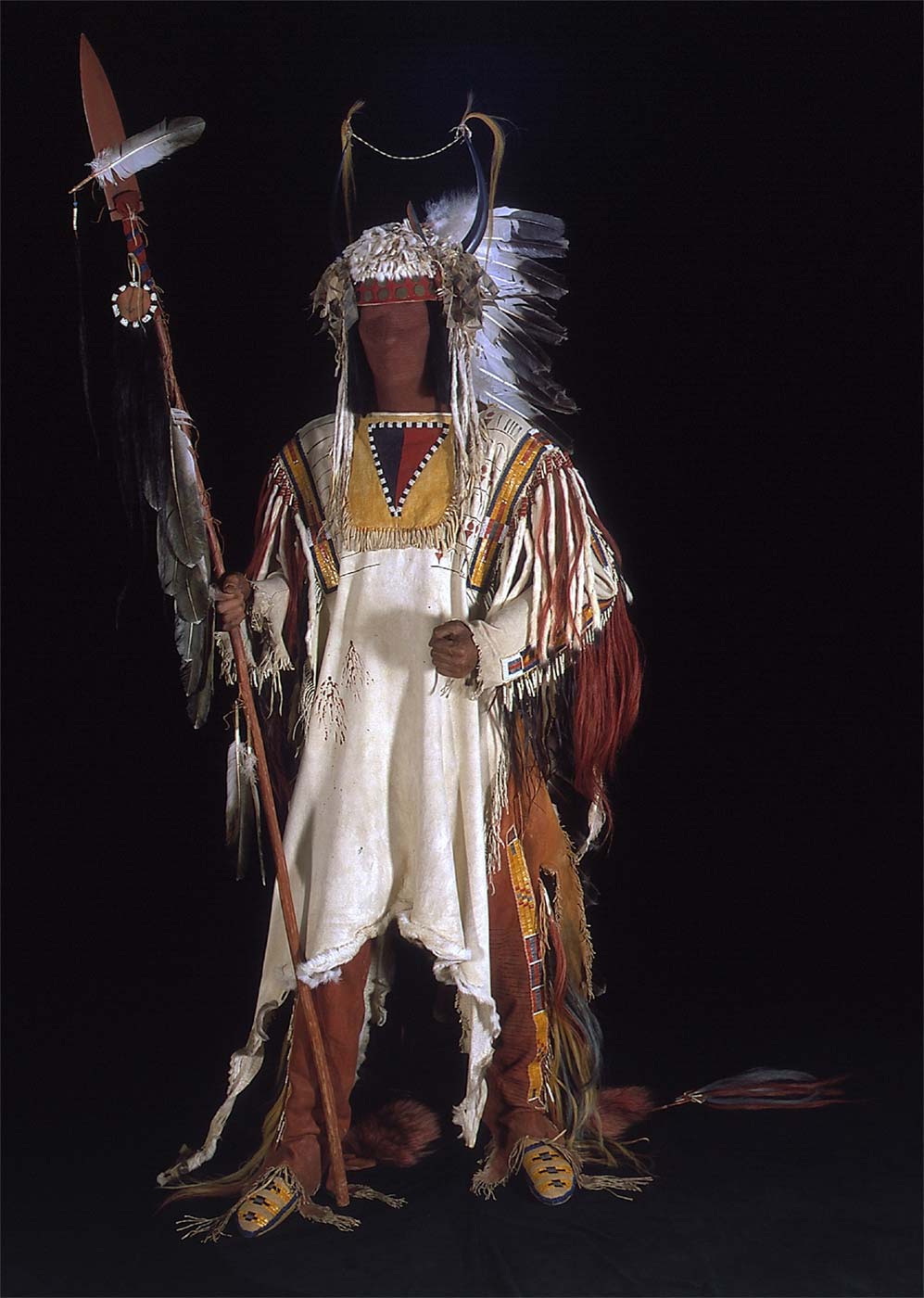
SECTION 3: KEY FILMS AND COSTUMES
As Dances With Wolves set the standard for Native American feature films, the 1991 mini-series, Son of the Morning Star, raised the bar for television. The story compared the lives of George Armstrong Custer and the iconic Lakota chief Crazy Horse. The six part series, the last film by Republic Pictures, covered the entire Indian war period, most of the important battles of this period, and featured nine Plains tribes. The Native costumes, by designer Cathy A. Smith, had to reflect the changing times, the different tribal entities, follow 4 main characters through a forty-year period and hundreds of extras. As Custer is one of the most studied historical figures in America, the costumes were subject to extreme inspection. The costume of Crazy Horse was a key issue – the mystic figure of Indian resistance had never allowed his photograph taken. Without photos to rely upon, the regalia was designed by researching rare interviews recorded with fellow warriors during the early Reservation period (1900-1930) and studying the Ledger drawings of the Battle of the Little Big Horn, executed by Lakota warrior Red Horse.
Another challenge presented by this film was the costuming of the historic Warrior Societies of the Northern Cheyenne and Lakota. The native extras were Cheyenne and Lakota and many were members of warrior societies still in existence in Montana and South Dakota. The regalia had to be correct if they were to wear it – it represented their spiritual tradition. The additional challenge lay in the fact that most of the materials to make the war bonnets, shields, coup sticks, and war shirts were rare, hard to find, or illegal.
This was the first and only time these historic warrior societies have been documented on film. Son of the Morning Star won an Emmy for Costumes, the only time to date that Native American costumes have won an Academy award.
1992 debuted Last of the Mohicans, an epic French-Indian war (1754-1763) film, featuring Daniel Day Lewis in a mix of Native and colonial clothing and hundreds of Huron and Mohican actors and extras. The initial costume designer, James Acheson, after researching intensely, set up a workshop and created over 800 period costumes, under extremely stressful conditions. The Algonquin people in this colonial time period had never been successfully portrayed on film before. The authenticity of the dark–smoked buckskin costumes, porcupine quillwork, war paint, and shaved heads – in contrast with the British in their Rococco style, amplified the violence and savagery of the story. The costumes also reminded the viewer that not all Native Americans wear a flare warbonnet and hunt buffalo on horseback.
Geronimo, An American Legend, 1993, brought another tribe to the forefront:
The Chiricahua Apache led by Geronimo. The time period is 1880’s and the Apache are in their last days of freedom, fighting the US army. Designer, Dan Moore, headed a workshop where every costume was created, researched by historians, and distressed to correspond with the desperate war conditions as well as the location –Monument Valley, Arizona. The Apache at this time wore a mix of Mexican cotton and native buckskin, with their distinctive thigh-high “cactus-kicker” moccasins being the tribal signature. The Apache clothing met the needs of a desert-abiding people who had no time for embellishment (i.e.: beadwork or warbonnets.)
The television series Longmire, 2012-2017, set in contemporary times, featured the people of the Northern Cheyenne reservation interacting with the local residents. The contemporary costumes were what any one in the lower economic status of the American west wears, including Indian police uniforms. The many flashbacks to pre-reservation times introduced historical Cheyenne warrior regalia, including a “Dog Soldier Society” warrior. The “Dog Soldier” with his 700 feather headdress became an iconic and fearsome figure in the show, exactly what his regalia was meant to convey. The richly decorated, proud, historical regalia contrasted with the downtrodden contemporary clothing of the Cheyenne, adding an emotional subtext to the story, at the same time illustrating the fact that the Cheyenne are still in existence. The Designer, Daniela Moore was able to source these period correct costumes from a local New Mexico native costume house.
One final film to mention is Comanche Moon, the prequel to Lonesome Dove. 2008. Hundreds of extras were dressed as Comanche warriors, all of whom had some variation of Honor feather tied to their scalp lock. Historically these feathers would have been Eagle, Hawk, or perhaps Owl. The sale or possession of raptor feathers is against the law in the US, except by registered tribal members. Therefore. the costume designer, Van Ramsey, had dozens of legal domestic turkey feathers hand painted to approximate raptor feathers. The Comanche cultural advisors managed to bring dozens of real Eagle feathers legally to the set and they were used in some of the most important scenes, of course always accounted for. A small costume detail made a huge difference to the trained eye.
REFERENCES and FURTHER READING
- Prince Maximilian zu Wied, Thomas, Davis & Ronnefeldt, Karen ed. People of the First Man: Life Among the Plains Indians in Their Final Days of Glory. New York: Promontory Press, 1982.
- Irvin, George. The Art of Robert Griffing. New York: East/West Visions. 2000.
- Mails, Thomas. The People Called Apache. Englewood Cliffs, NJ: Prentice-Hall, Inc. 1974.
- The Museum of Western Film & Costume: 20 Summer Road, Santa Fe, NM 87506
- 505-455-2819 (Native American Costume Rental & Research)
- The Journey of Prince of Wied,(2017), Dir. Philipp Greiss, Berlin: Atlantis-Film.
- Hallemann, Caroline. “Outlander’s Terry Dresbach on the “Terrifying” Challenge of Designing this Seasons Native American Costumes.” Town & Country, Nov. 25, 2018.

